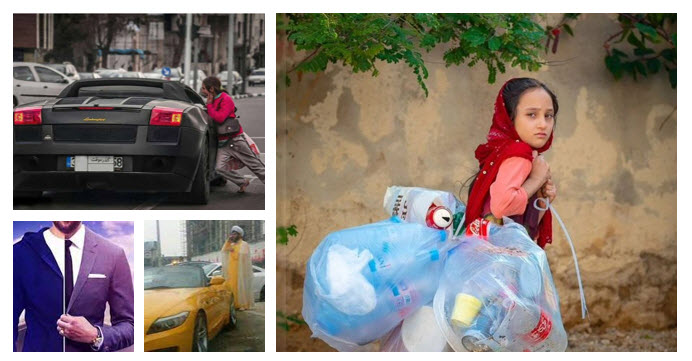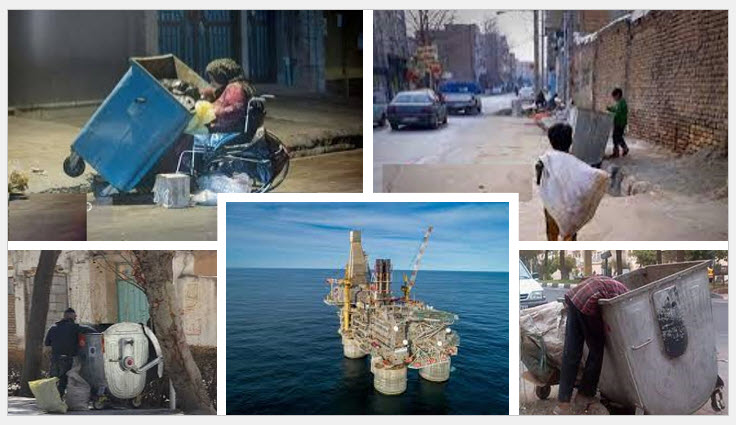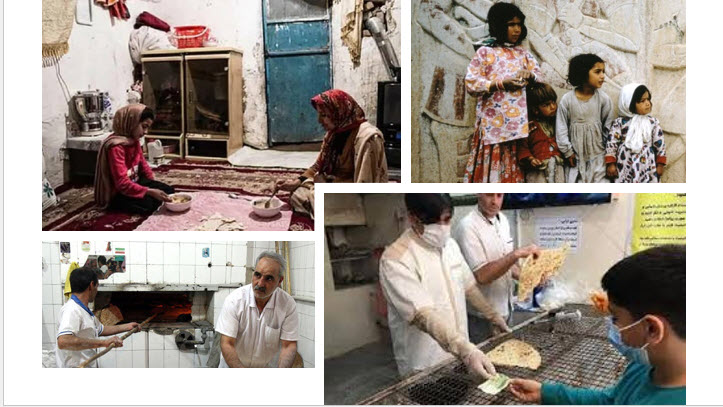
The regime’s plan is to turn their relatives’ lives into a luxury lifestyle conglomerate that includes not only clothes and planes, but also cars, yachts, helicopters, furniture, and real estate.
The Iranian regime’s destructive policies have resulted in a massive class divide. More than 4,000 children of regime officials are living abroad, according to Mohammad Saleh Hashemi Golpaygani, the staff secretary of the regime’s ‘Enjoining good and forbidding wrong’ headquarters.The regime’s plan is to turn their relatives’ lives into a luxury lifestyle conglomerate that includes not only clothes and planes, but also cars, yachts, helicopters, furniture, and real estate. At the same time, the majority of people in Iranian society are struggling to make ends meet, with many only able to afford one meal per day.
Severe malnutrition is one of the most serious consequences of the growing class divide. One of the “blessings” of this “holy system” is the starvation of the people, who cannot afford even basic food staples, dubbed “luxury food” by the regime’s state-run media.
On August 7, the state-run daily Gostaresh News wrote about these ‘luxury foods,’ stating, “One of the main consequences of high inflation has affected people’s nutritional basket. Rice, eggs, fruits, and vegetables, in addition to red and white meat, have gradually become luxury items in families’ shopping baskets.”
“Point-to-point inflation of edibles reached 86 percent in July; this means that in July 2022, families will have to spend 86 percent more than in July 2021 to buy a certain set of food products,” the daily added.

At the same time, the majority of people in Iranian society are struggling to make ends meet, with many only able to afford one meal per day.
According to statistics presented by the regime’s media, as the price of meat rises, the tenth decile of society consumes 27 times more meat than the first decile. The change in eating habits in Iran is putting children in danger, and the next generation is likely to suffer from malnutrition as well.
Bread consumption in Iran is currently two to three times that of other countries in the region, as it is all that many families can afford. This means that people must forego calories, as well as protein and vitamins that the body requires. According to the state-run daily Radar Eghtesad, providing bread is a major challenge for most people, so they are forced to pay higher prices for it.
The state-run Shargh daily reported the regime’s ministry of health’s warnings on July 27, writing, “Food inflation in Iran has become alarming, and the statistical center has estimated the spot inflation rate of food in July to be over 90%.” Following the Ministry of Health’s warning, there has been a doubling of malnutrition in some deprived provinces in Iran, including Sistan-Baluchistan, Kerman, Hormozgan, and South Khorasan.”

Bread consumption in Iran is currently two to three times that of other countries in the region, as it is all that many families can afford. This means that people must forego calories, as well as protein and vitamins that the body requires.
They added, “According to the activists of the food market, this incident has caused a sharp fall in the per capita consumption of the main food items in Iran, and on the other hand, it has led to an increase in the consumption of bread. Apart from this, food items have been removed one by one from the shelves of Iranian supermarkets and replaced by items such as packaged bones, chicken skeletons, and rice scraps.”
In children, a lack of calcium, protein, and nutrients manifests as osteoporosis, short stature, and other diseases. “During growth, especially in children under five and in children at puberty, the first deficiency is protein malnutrition, which causes a delay or decrease in growth, and this decrease in growth will have side effects, especially in later generations,” one of the regime’s nutritionists and diet therapists said.
Because growth, particularly height growth, is linked to the development of societies, a reduction in growth causes a disruption in the development of society.”Malnutrition has literally become a deadly tsunami that has engulfed Iran’s nation, particularly among the youth and young children.

